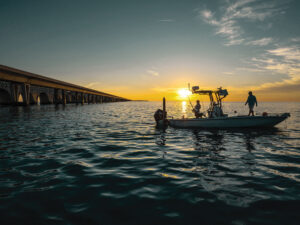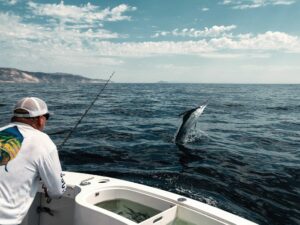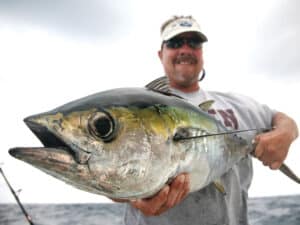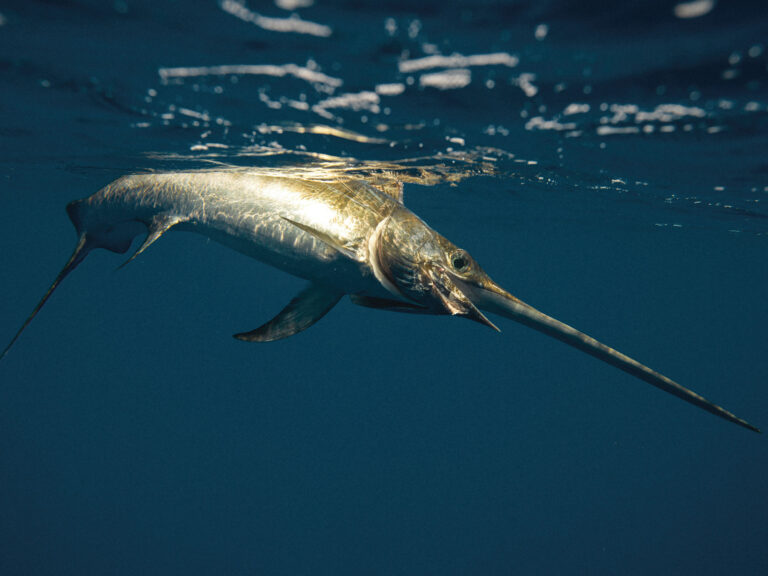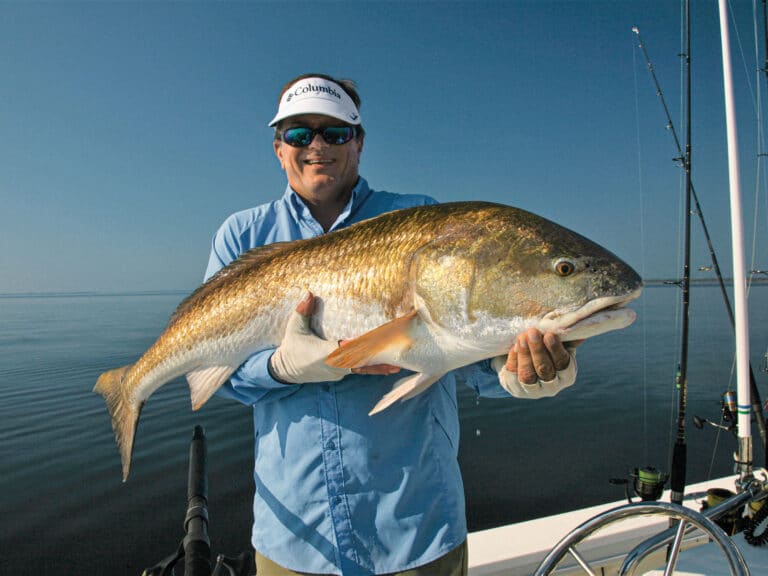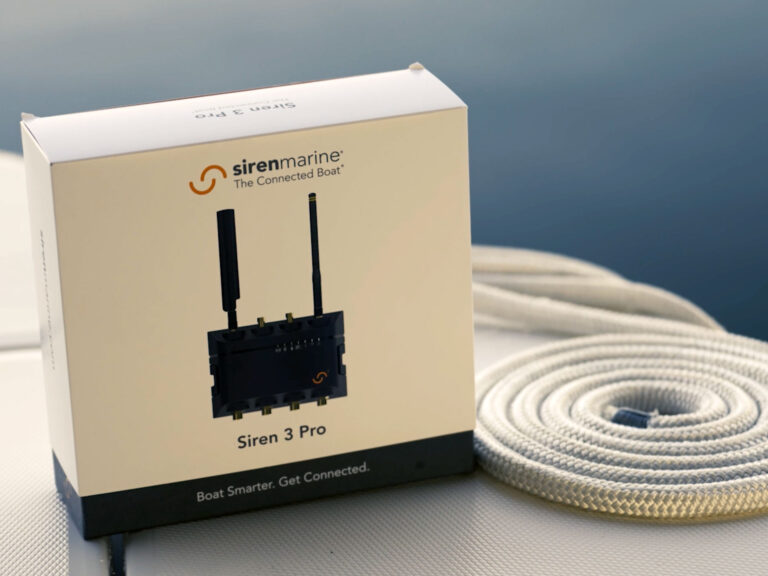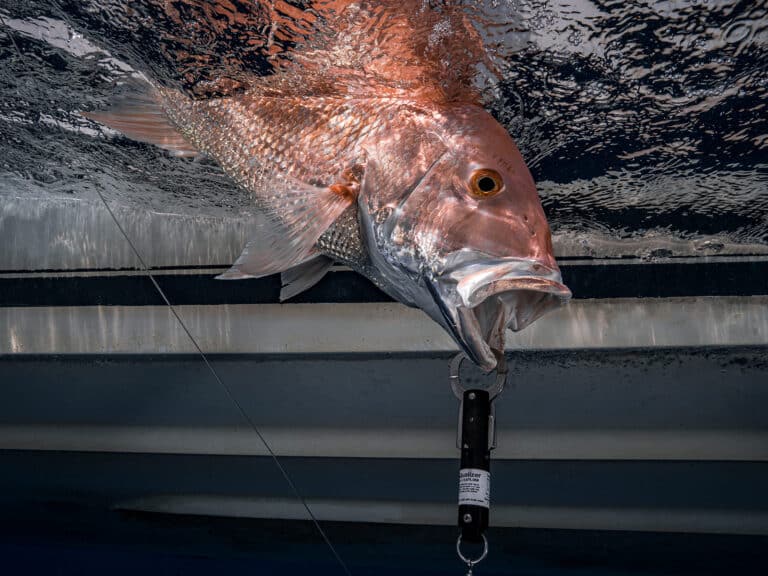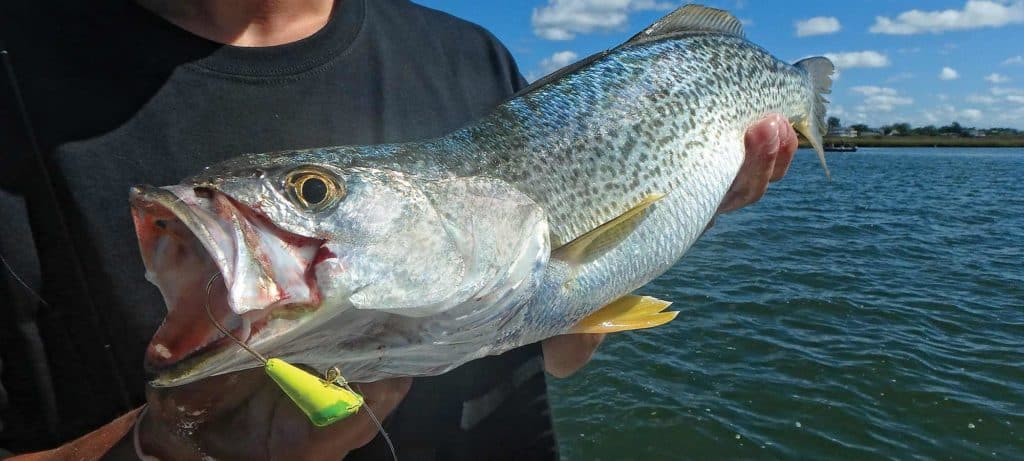
Capt. Dave DeGennaro clenched a fistful of grass shrimp in his hand, and in one motion, opened his palm and made an underhand throw, tossing a spray of grass shrimp into the waters of Barnegat Bay. The clear, green crustaceans flitted about, sinking into the water column, flowing back with the tide. The slick was established.
On the fish finder, patches of red began to show under the stern. Packs of weakfish caught a whiff of the shrimp scent, then moved up the slick to follow the clicking and flitting of the crustaceans. It’s feeding time. I plunked a shrimp fly into the water 15 feet behind the boat, right where we witnessed weakies popping the surface.
Three quick strips and, in an instant, I was connected. Dozens upon dozens of jewel-flanked 1- to 2-pound weakfish followed in a feeding frenzy, hitting every line thrown in the water. Slip-bobber rigs, flies, or shad darts tipped with shrimp — it didn’t matter — the bite was going bananas, and Jersey weakfishing was in full swing.
Best Bait for Weakfish
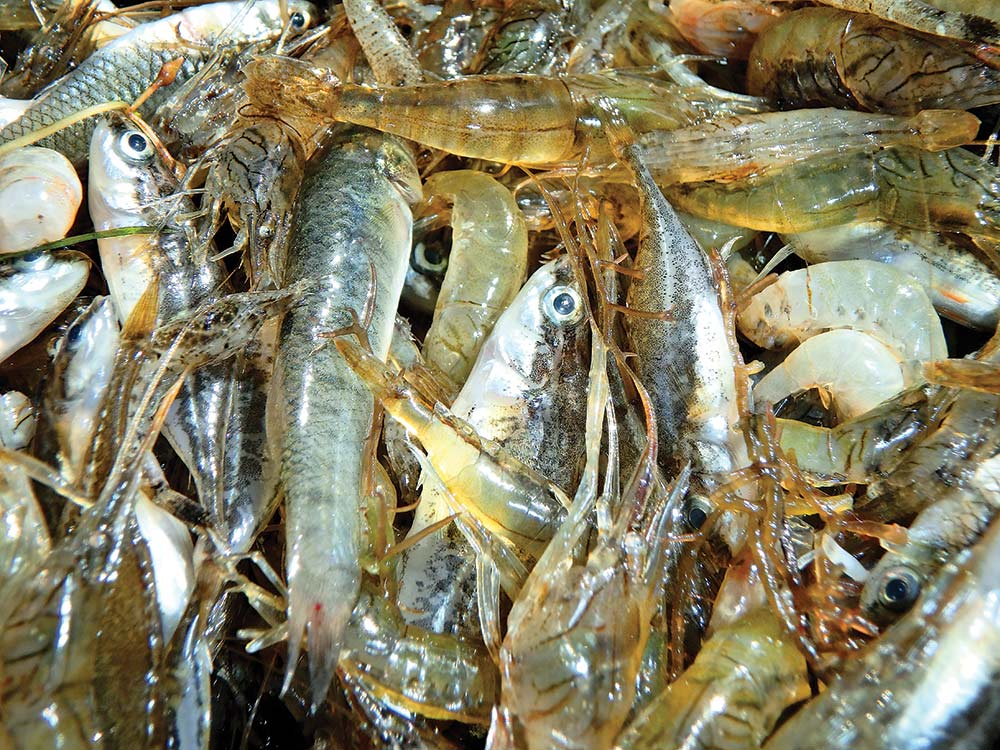
“You gotta know someone who’s got grass shrimp,” said DeGennaro as he hauled up his homemade wooden shrimp box out from under his dock. “The old salts know that shrimping will catch weakfish when nothing else will turn their noses.”
READ MORE: A Surprise New Jersey Redfish Catch
In DeGennaro’s treasure box was at least 5 gallons of grass shrimp, pipefish, sticklebacks, small white crabs, sand shrimp, bay anchovies, spearing, and kingfish fry — all the forage that “spike-tooths” feed upon in Barnegat Bay. DeGennaro then set up on a ledge inside Barnegat Inlet, dropping anchor and dishing out handfuls of shrimp to get a slick going. “You don’t want to overfeed them, just toss a handful every minute or so to get them interested. It’s like tuna chunking on a scaled-down level.”
How to Catch Weakfish
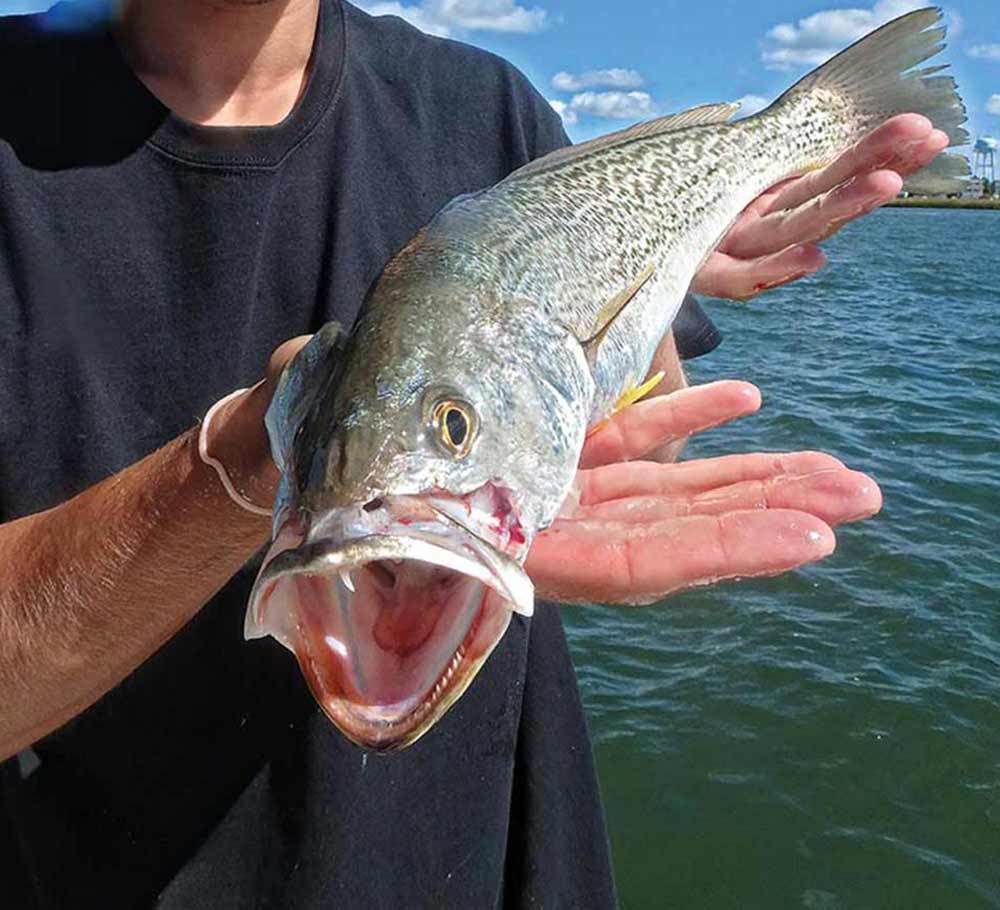
For shrimping, we set up the rods three ways. One light rod carried a ¼-ounce chartreuse shad dart tipped with a shrimp; the next carried a float rig rigged with a 24-inch, 15-pound Seaguar fluorocarbon leader and a No. 2 bait-holder hook. On the final rod, we freelined a splitshot pinched above on the same type of leader. I also employed my 7-weight Sage with a sinking line and a shrimp fly to add a little variety.
When hooking shrimp baits, DeGennaro states, “You want to thread the first shrimp on the hook, then take two to three more and hook them through the body to fill the hook. Weakfish simply cannot pass up a ball of shrimp.” Hits come fast and furious. When you feel the first tap, or see the float go down, set back immediately. My friend Christian Palmisano quickly found out just how fast and furious the bite gets as his freeline rig got smoked time and time again.
When it comes to anchoring, DeGennaro suggests, “Study a chart and look for ledges leading into holes, maybe a drop from 6 to 10 feet or so where the tide carries forage through.” Water temperatures for weakies generally range from 65 to 75 degrees, and they prefer clean water. The shift of a tide is always prime time for shrimp, with optimal times coming around the last of the incoming and the beginning of the outgoing, on the high water.
Best Time to Catch Weakfish
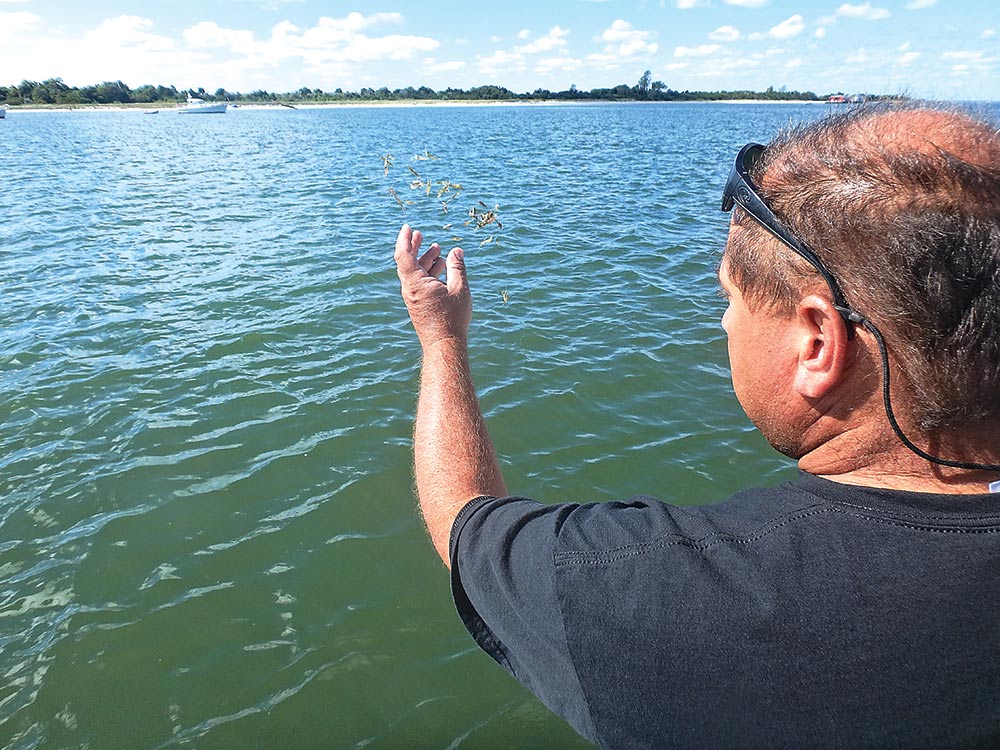
While shrimp catch the smaller spikes of 1 to 3 pounds, to target tide runners, which run up to 10 pounds, soft plastics fit the bill.
“At the crack of dawn, the ICW channels and grass flats hold weakies as they run with the tides,” DeGennaro says. “We work the ledges where flats dip into the ICW channels inside Barnegat Bay as weakfish feed with their heads in the current.”
A light lead-head, ¼ to 3⁄8 ounce, tipped with a 4- to 6-inch Fin-S or Zoom Super Fluke in bubble gum or Albino Shad seems to get the weakies interested, but it’s all in the presentation when working plastics. “You want to slowly reel in the bait. Don’t jerk or jig it,” DeGennaro says. “Weakies hang on to the plastic; they don’t necessarily commit to it like a bass or bluefish.”
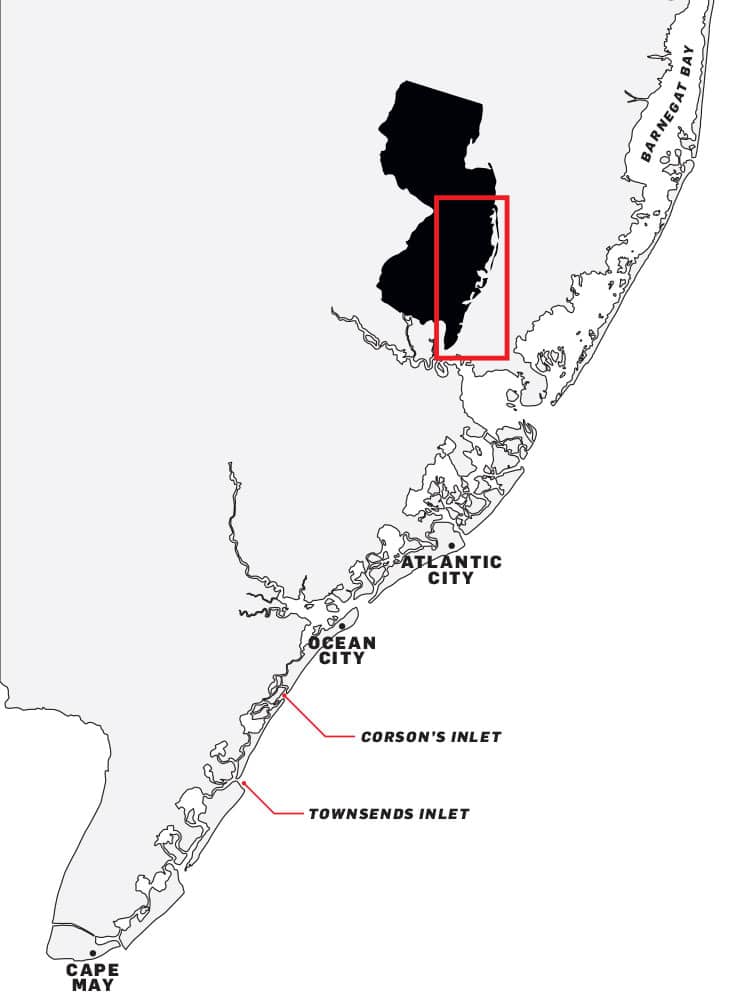
Channels and coves inside inlets are also hotbeds of opportunity for weakfish, but only during pre-dawn or night hours when boat traffic is nonexistent or at a bare minimum. Corson’s Inlet and Townsends Inlet are tide-runner superhighways, flushing bait in and out with the moving water.
I have cast plastic baits over the grass beds that lead into mussel and clamshell beds in Corson’s Inlet to stunning success as weakfish feed around the flood tides. Use as little terminal tackle as possible, connecting the running line to 36 inches of 12- to 15-pound fluorocarbon leader with an uni-knot, and tie a loop knot directly to a bare 3⁄8- to ¾-ounce jig head tipped with a Zoom Super Fluke bait.
At night, switch out the plastic baits with noisemakers like small pink Rat-L-Traps. Light-tackle rods and reels set with light drags prevent pulled hooks. Know that a small tap doesn’t mean a small fish, as large fish, 4- to 8-pound-class, will also lightly mouth the presentation. Three- to 6-pound fish are the norm around inlets.
Use Crabs to Catch Weakfish
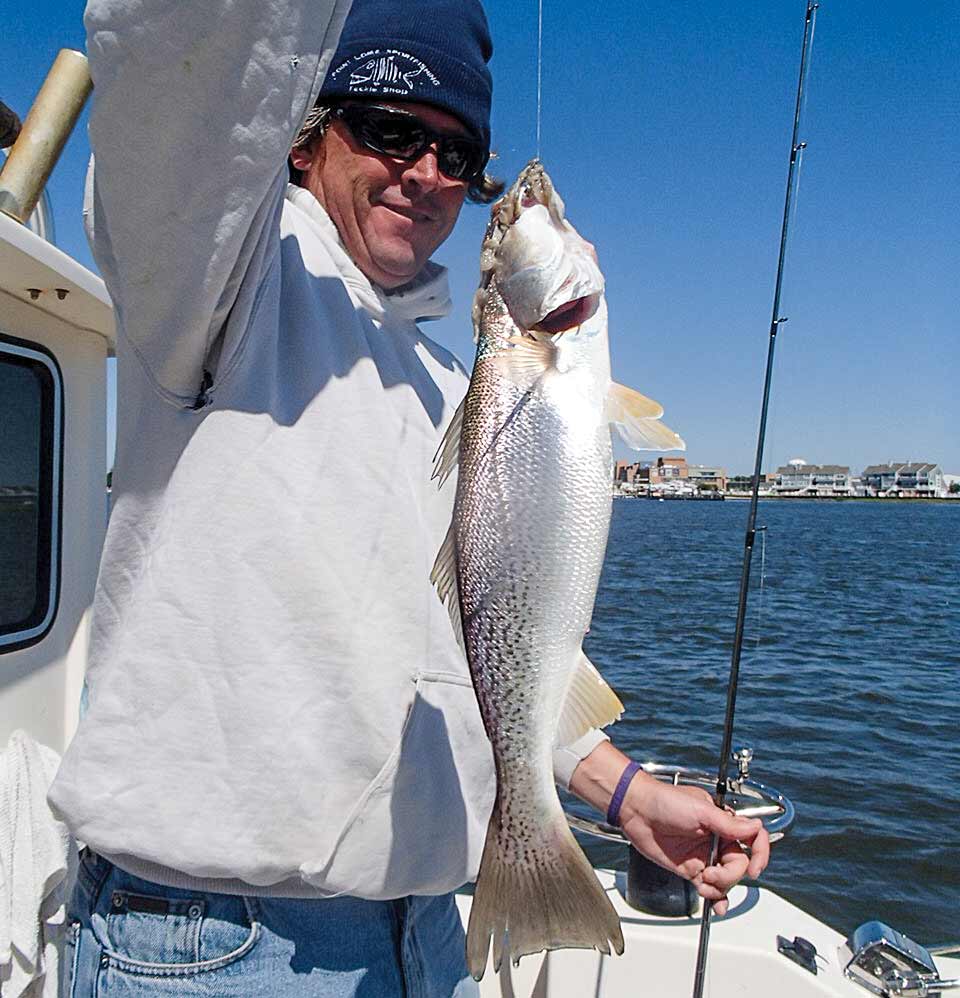
Capt. Dave Showell, of the Absecon Bay Sportsman Center, utilizes shedder crabs to get the job done on weakfish. “The blue crab shed is usually influenced by the moon, between the new and full moon. A proficient crab extractor can get 12 usable chunks of crab from all the nooks and crannies,” Showell says. “You want to keep the leg sockets on or a piece of shell attached so it stays on the hook, or use some elastic tie down if there is no foothold to grab.”
Showell’s crab presentation starts with a light ¼- to ½-ounce white bucktail tipped with a 6-inch purple firetail worm, then sweetened with a chunk of shedder crab. “That combo works well because when female crabs pop out of their shell, they have a white belly with red/purple pinchers, and the trailing firetail worm mimics it perfectly with the scent of the chunk wafting back,” he says.
DeGennaro opts to use a same-size chartreuse shad dart, but he throws the crab piece or soft claw hanging on the naked hook. “When shedder-fishing for weakies, focus on the deep holes and drift through them,” Showell recommends. “Go as light as you can to get on or near the bottom and don’t fast-jig; simply lift up and down like a slow wave. Weakfish are light biters and will hang on to the bait.”
The best tides start at full flood, then into the outgoing. That’s when crabs shed: on the high-tide marks. If you fish low-tide hours, focus on the holes where weakfish retreat during low water. Weakfishing in Jersey’s bay waters can be an extremely cyclical and fickle game, with the rule of thumb in recent years being a feast or famine bite. But fear not, it’s like hunting ghosts in a graveyard: Once you find one, you’re bound to find the whole population.
Weakfish Fishing Frequently Asked Questions (FAQs)
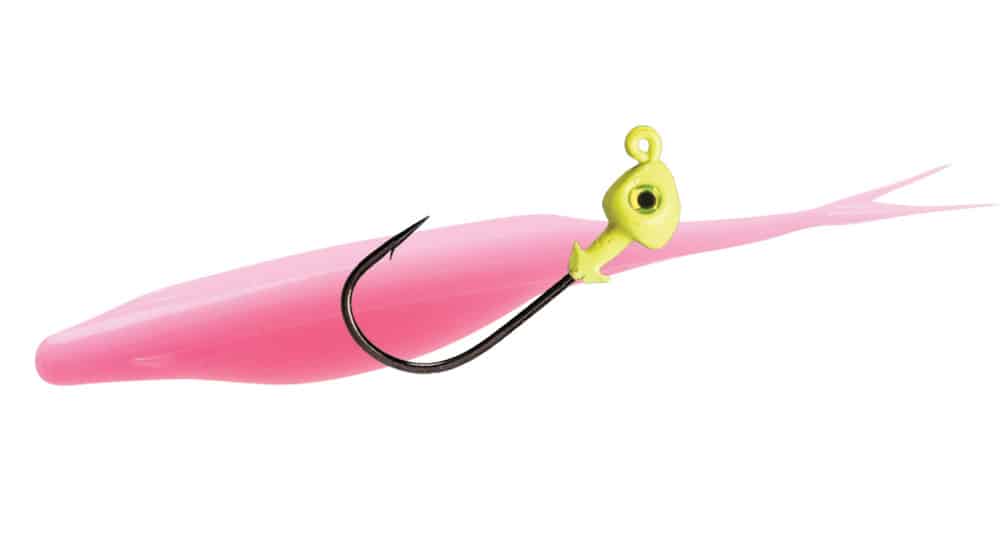
- Where to catch weakfish in New Jersey? Central/South Jersey; Barnegat Bay, Absecon Bay, Ludlam Bay, Corson’s Inlet, and Townsends Inlet
- When to catch weakfish? June through September
- Best captains who fish for weakfish? Capt. Dave DeGennaro (Hi Flier Fishing Charters) and Capt. Dave Showell (Absecon Bay Sportsman Center)
Best Tackle to use for Weakfish
- Rod: 61⁄2- to 7-foot, light to medium spinning rod
- Reel: Shimano, Quantum, Penn or Daiwa 2500 to 3500 class reels
- Line: 12-pound braid or 8-pound monofilament, 8- to 12-pound fluorocarbon leader
- Lures: 1⁄4- to 1⁄2-ounce shad darts; shrimp flies; 3⁄8- to 1⁄2-ounce lead-heads or bucktails tipped with a 4- to 6-inch bubble gum/rainbow trout/Electric Chicken Fin-S; Bass Assassin, Zoom, Culprit lures
- Terminal Tackle: 1/0 Gamakatsu bait-holder hooks, 50-pound Spro barrel swivel, slip floats

